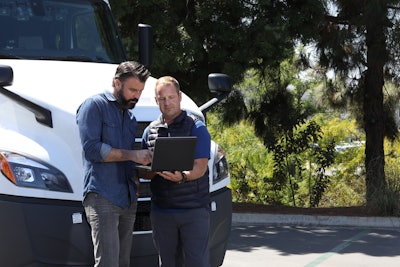
Lytx, a global provider of video telematics, analytics, productivity and safety systems for commercial and public sector fleets, shared new information about commercial driving and distraction.
In the United States, at least nine Americans die in distracted driving crashes every day. In commercial vehicle fleets, distraction (related to cell phone use, eating or general inattention) is the second leading driver-related cause of fatal truck crashes.
Lytx data shows the following about distracted driving behaviors:
- Risky behaviors behind the wheel tend to cluster. Drivers who engage in one potentially risky behavior are often found engaging in other risky behaviors at the same time. For instance, drivers who eat while driving also tend to drive unbelted or follow the vehicle in front of them too closely. Lytx found that 23 percent of all its scored events included a driver engaging in multiple potentially risky behaviors.
- On a positive note, 65 percent of all cell phone use was hands-free in 2018, up from 27 percent in 2016. However, Lytx found a 13 percent increase in the overall volume of risky driving behavior involving handheld cell phones during this timeframe.
- Lytx also found a 10 percent increase in the overall volume of events in which drivers using hands-free devices engaged in one or more other potentially risky distractions as well, such as eating, drinking, smoking or using another device.
- A multi-tasking driver engaged in multiple potentially risky distracting behaviors has a 100 percent increase in risk over a driver engaged in one potentially risky, distracting behavior.
- Driver cell phone use occurs most frequently at 65 mph.
“There are 6.1 million commercial motor vehicle drivers in the United States, and millions more around the world,” said Brandon Nixon, Lytx chairman and chief executive. “Our dream is that no commercial driver will ever be the cause of a collision. Through the work we’re doing to help fleets stay safe, we have a great opportunity to make that dream a reality. We use our billions of miles of driving data to train artificial intelligence algorithms to detect risk, and we use our advanced data analytics to identify risky behaviors and help fleets do something about distracted driving.”
Lytx says its more than 100 billion miles of collected driving data and 100,000 daily risky driving events captured by video with machine vision and artificial intelligence technology to provide fleets with information to help protect drivers and improve their driving behavior.
Overall, Lytx clients had approximately 625,000 fewer instances of risky driving in 2018 compared to 2017. The company’s Driver Safety Program has been associated with up to a 50 percent reduction in collisions and up to 80 percent reduction in collision-related costs.
“Identifying the underlying causes of risky behaviors and addressing the dangers of multi-tasking are crucial first steps to training safer drivers,” said Del Lisk, vice president of safety services at Lytx. “We recommend managers help their drivers understand the elevated risks around them, especially during peak times associated with distraction. Also, by advising drivers to make their calls or appointments before they start driving, managers can encourage them to avoid giving into these temptations.”
Lisk continued, “One of our clients confidentially surveyed their drivers about their use of hand-held cell phones while driving. Through this survey, they discovered that more than half of all calls to their drivers were initiated by family members–the people who love them the most unknowingly potentially putting them in harm’s way. The company followed up with a program focused on educating families on the risks associated with calling their loved ones while they were driving. This is a great example of how looking for the underlying causes of risky behaviors can uncover important information.”
The data provided by Lytx comes at the conclusion of National Safety Council’s Distracted Driving Awareness Month in April, which is a nationwide effort to recognize the dangers of and eliminate preventable deaths from distracted driving.





![Eaton-advantage-clutch[1]-2019-04-29-10-36](https://img.ccjdigital.com/files/base/randallreilly/all/image/2019/04/ccj.Eaton-advantage-clutch1-2019-04-29-10-36.png?auto=format%2Ccompress&fit=crop&h=167&q=70&w=250)








